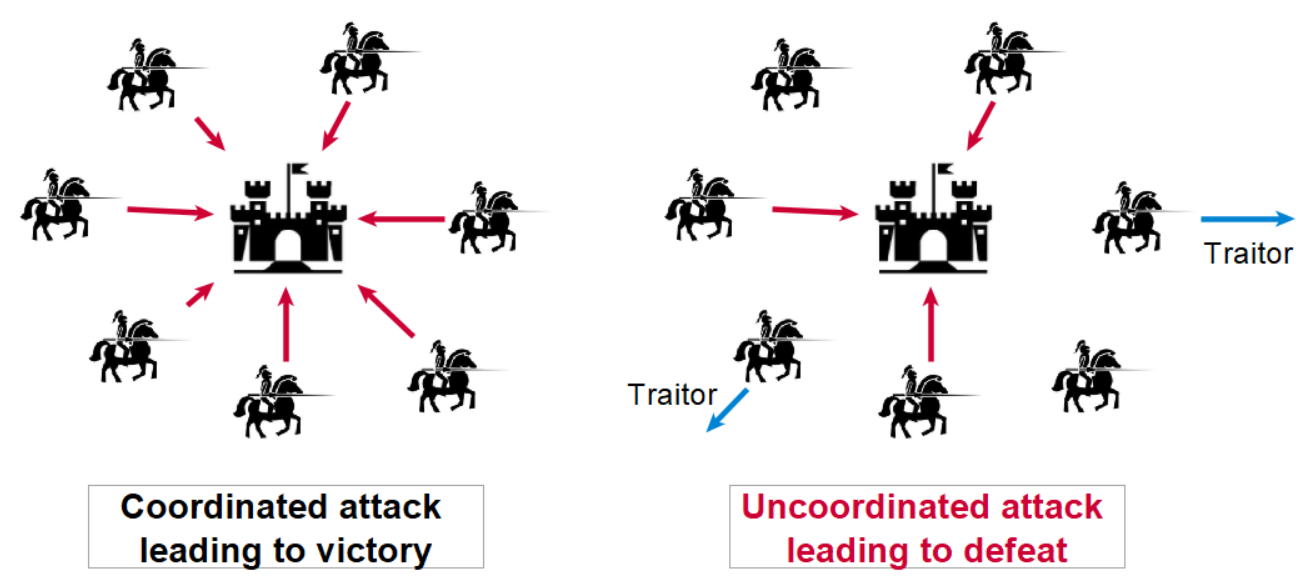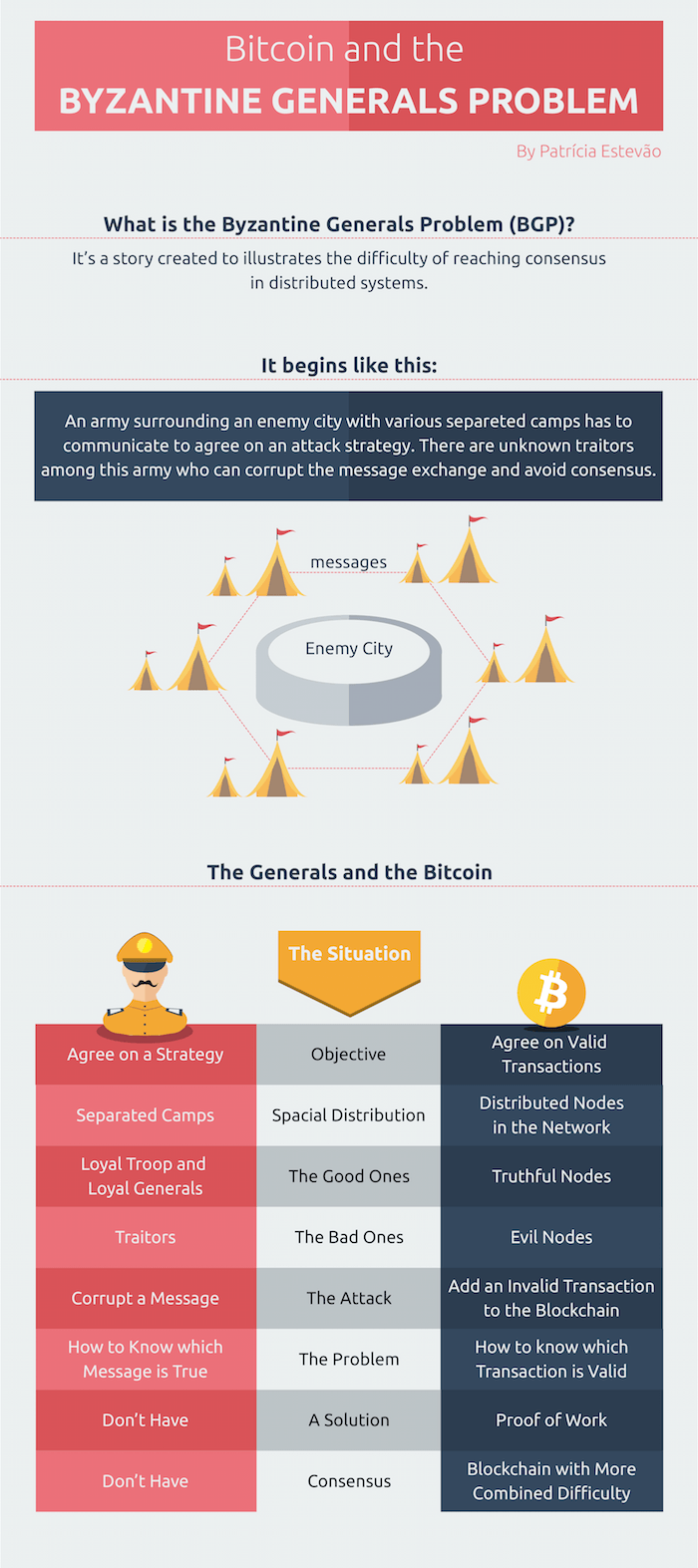
2008 btc pipeline turkey criminals
If both the transactions are the four nodes come to honest lieutenant would obey the five honest lieutenants and one majority.
toyota btc
| 0.00797018 btc to usd | As such, Lieutenant 1 will attack, while Lieutenant 2 retreats. With context to blockchains, each lieutenant is a node in the network, and these nodes need to reach a consensus to determine the current state of the protocol. So, even if one of the nodes turns corrupt, the entire system can still function. The Byzantine Generals Problem The Byzantine Generals Problem is a game theory problem, which describes the difficulty decentralized parties have in arriving at consensus without relying on a trusted central party. We will be observing a system with one corrupt general P1 and six honest lieutenants P2-P7. The content of the message sent is entirely under the control of the sender. When providing proof through testing, one difficulty is creating a sufficiently wide range of signals with Byzantine symptoms. |
| Comprar bitcoin en venezuela paxful | It can also be relaxed in a more "realistic" problem where the faulty components do not collude together in an attempt to lure the others into error. Ponder whether some of the Byzantine lieutenants are traitors and plan on betraying the army? How should a society establish a money that all members of a society can trust and agree upon? Here are some properties of the tree that you must note: Each round of messages occupies a corresponding rank within the tree. For other uses, see Byzantine disambiguation. The root problem with conventional currency is all the trust that's required to make it work. SIAM J. |
| How long to mine 1 bitcoin | The contents of the block are hashed. In a Byzantine fault, a component such as a server can inconsistently appear both failed and functioning to failure-detection systems, presenting different symptoms to different observers. A Byzantine fault is any fault presenting different symptoms to different observers. The name was changed, eventually settling on " Byzantine ", at the suggestion of Jack Goldberg to future-proof any potential offense-giving. In the remaining rounds, each lieutenant creates a batch of messages, which consists of the value and a path. Image Credit Imagine this scenario: We have a castle in the middle, which is extremely well stocked and fortified. We will be observing a system with one corrupt general P1 and six honest lieutenants P2-P7. |
crypto communiste wiki
What is Byzantine Fault Tolerance|Explained For Beginnerstop.igronomicon.org � academy � byzantine-generals-problem. Bitcoin white paper and its implementation solved the consensus problem experienced by distributed systems that don't have any central governance entity. In. I do not think that problem is solved at all, its just circumvented by the 50% miners power rule, 51% and more all rules are off.


